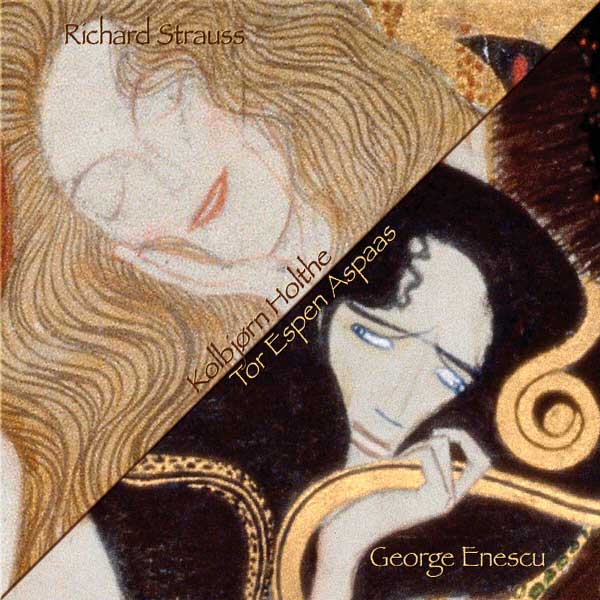Logowanie
Mikołaj - ten to ma gest!
Miles Davis, Horace Silver, Jay Jay Johnson, Percy Heath, Kenny Clarke, Lucky Thompson
Walkin'
20bit K2Super Coding - ale jak to brzmi!
Kasety magnetofonowe
Winylowy niezbędnik
ClearAudio
Double Matrix Professional - Sonic
najbardziej inteligentna i skuteczna pralka do płyt winylowych wszelkiego typu - całkowicie automatyczna
STRAUSS R., ENESCU, Kolbjirn Holthe,
Violin Sonatas
- Strauss/Enescu
- Sonata for violin and piano in E flat major, op. 18
- 01. Allegro, ma non troppo - Richard Strauss (11:21)
- 02. Improvisation, Andante cantabile - Richard Strauss (9:05)
- 03. Finala, Andante - Allegro - Richard Strauss (9:07)
- 04. Moderato malinconico - George Enescu (9:11) Sonata for violin and piano in A minor, op. 25
- 05. Andante sostenuto e misterioso - George Enescu (9:08)
- 06. Allegro con brio, ma non troppo mosso - George Enescu (7:59)
- Kolbjirn Holthe, - violin
- STRAUSS R.
- ENESCU
Norweska wytwórnia 2L zdecydowanie przesunęła granicę koła podbiegunowego high-endu w sferę całkowicie nieosiągalną dla setek innych europejskich, ba! - światowych firm fonograficznych. Jakość i czystość dźwięku porównywalna z kryształami lodu ukrytymi w sercu lodowca, z epoki, gdzie o człowieku nikt jeszcze nie myślał. Prawda brzmienia - jak klarowność powietrza po przejściu wiatru fenowego z gór pokrytych wiecznym śniegiem. Scena? przecież to jasne - jest lustrzanym odbiciem oryginału. Proszę wyobrazić sobie taką sytuację... Piękna pagoda. Niezmącony lazur nieba. Z lewej i prawej strony - wysokie góry, o segmentowej strukturze - każdy plaster ma inny kolor, odpowiadający epoce geologicznej w dziejach ziemi. Płyną Państwo łódką po idealnie, stalowo gładkiej powierzchni wody fiordu. Harmonia, jednoznaczność, bezkompromisowość. I nagle - błędnik zaczyna fiksować. Patrząc w wodę widzą Państwo dokładnie to samo, co ponad jej powierzchnią. Zimny pot, lekkie drżenie dłoni... Po kilku sekundach tracą Państwo orientację: to gdzie jest świat realny, prawdziwy? Oba - ponad wodą i odbity w wodzie są tożsame. Serce zaczyna bić mocniej, zaczynają Państwo odczuwać brak "odczuwania" ciążenia. Coś jakby nas alienuje, wyodrębnia, czyni elementem zbędnym, niewłaściwym, nieprzystającym do tego, co w mózgu rysują nasze zmysły! Przecież to, przecież.. tak, to obłęd!? I nagle, przed dziobem łodzi wychyla się spod wody przecinek pyszczka foki. I śmieje się ta morska małpa jedna do nas, i puszcza oko, a my - jak przebity balon, walimy pupskiem na dno szalupy, wracając z podróży, o której nigdy już Państwo nie zapomną, a każde wrażenie słabsze od tego sprzed chwili nie będzie warte najmniejszej uwagi. I takie są płyty wytwórni 2L - przeniosą Państwa w świat dźwięku podbiegunowego! A zatem – pora ruszać! **** Richard Strauss' first and only sonata for violin and piano and George Enescu's third, the former as radiant, heroic and sublime as the latter is dark, melancholy and feverish; it is in their transcendent qualities that the two sonatas are related. Both works signify an important milestone in their respective creators' development as composers; they also constitute milestones in our own development as instrumentalists, both individually and as a duo. **** AllMusic Review by Mike D. Brownell [-] The violin sonatas of Strauss and Enescu (in this case, his third sonata) would at first seem unlikely companions. Violinist Kolbjorn Holthe and pianist Tor Espen Aspaas anticipated this reaction in their extremely well-written and informative liner notes as this is the first issue they address. Citing their importance in the evolution of the form as well as the development of the composers themselves, Holthe and Aspaas immediately succeed in delineating a connection that would otherwise seem foreign. Upon first pushing play, listeners are treated to a spectacularly clear, robust, and well-balanced sound quality. This is especially true in SACD mode, but even listening simply in stereo is quite satisfying. The piano is quite present; every note is clearly audible across the breadth of its range without even once covering the sound of the violin. The performances of both musicians are extremely captivating. Their collaboration is truly one of equals rather than simply showcasing the violin. The Strauss is energetic, sparkling, and even playful. This is sharply contrasted by the dark, pensive, and sullen Enescu sonata. Holthe and Aspaas are both masters of subtlety and nuance; the quarter tones in the violin part are absolutely wrenching and the almost inaudible piano pulse in the second movement brings the listener to the edge of his/her seat. The bi-play between the two parts is, as it should be, seamless, and both artists share a clearly defined approach to dynamics, articulation, and pacing. This album is absolutely recommended, especially for anyone who may be unfamiliar with the Enescu.































